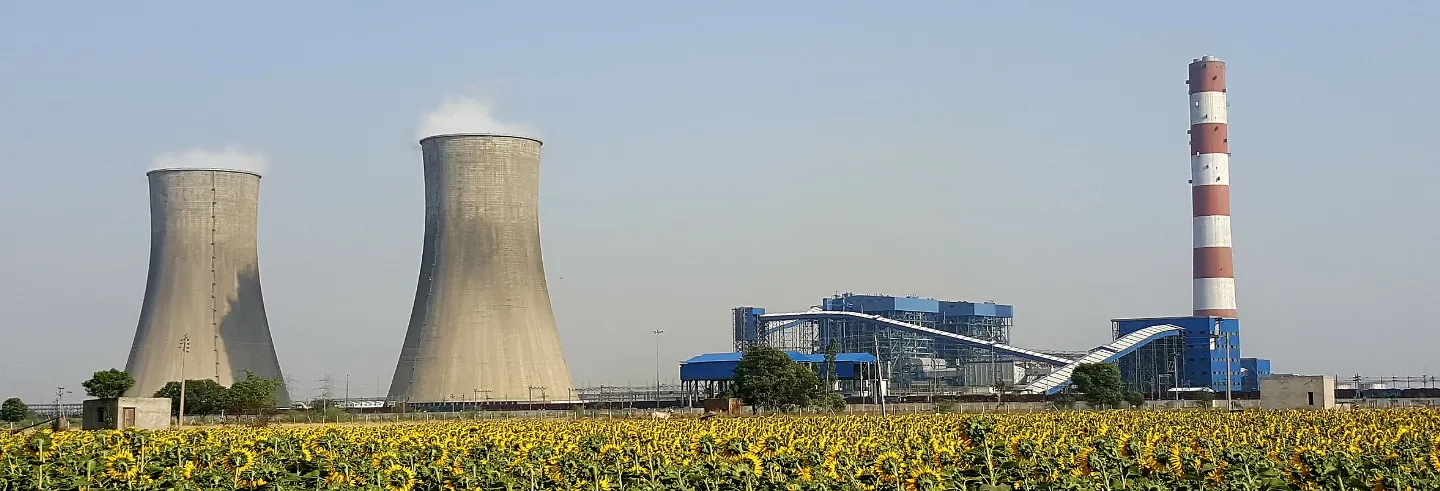The high-profile Glasgow Conference of Parties (COP), the 26th such meeting of countries attempting to advance global cooperation on climate change, was touted as our "last best hope" to save the planet (Alexander 2021). Hyperbole is a given at such global negotiations, and while a single global negotiation seldom rises to this sort of billing, it is true that time is getting desperately short to address the scale and scope of the climate crisis.
A March 202
But India also has other
Glasgow focused on bridging an ‘ambition gap’ but did rather less to bridge an ‘implementation gap’.
Given this broad framing, how do we understand India’s role in the Glasgow climate meeting? And what does it imply for how India should engage with this issue in the future? A discussion of international climate engagement, however, is best rooted in a prior understanding of domestic politics and interests, which provides the base from which to explore whether and how global positioning a
A quick round-up of the larger themes animating the Glasgow COP provides the context for Indian engagement.
The central political theme at Glasgow was ‘keeping 1.5 degrees alive’—extracting pledges that kept open the possibility of limiting warming by 1.5 degrees Celsius. In practice, this took the form of seeking ‘ambitious’ pledges from countries, and, in particular, pledges for future ‘net zero emissions’, and calling on countries to update pledges by 2022, which is earlier than previously expected.
India, in particular, came under substantial pressure prior to Glasgow, as the only G20 country without a net zero pledge. The country did, indeed, announce a pledge to emit net zero emissions by 2070 as
This emphasis on net zero is not without its critics. The political emphasis on future emissions pledges rather than near-term policy and emissions commitments suggests that 1.5 degrees Celsius has been kept alive on paper, or rather in the outputs of emissions models. Rather less has been put on the table in terms of short-term pledges to which today’s political class can
In other words, Glasgow focused on bridging an ‘ambition gap’ but did less to bridge an ‘implementation gap’.
Salient to India, the Glasgow Pact (Glasgow Climate Pact 2022) included explicit reference to fossil fuels, and particularly to the "phase down of unabated coal power and phase out of inefficient fossil fuel subsidies." India was in the eye of this storm as the proposer of text replacing 'phase out’ when referring to coal with the perceived weaker ‘phase down’
Finance was a central issue, with the final Glasgow Pact expressing "deep regret" that a long-standing pledge of $100 billion
per year from developed countries by 2020 had not been met.
Adaptation and ‘loss and damage’ — compensating countries for unavoidable impacts — both received more limited treatment than mitigation, a long-standing trend at COPs. In a partially hopeful step, a two-year work programme for a global goal adaptation was established. For loss and damage, long feared by developed countr
Finance was a central issue, with the final Glasgow Pact expressing "deep regret" that a long-standing pledge of $100 billion
Finally, the meeting completed two important procedural agenda items: rules for creation of carbon markets and for the transparency framework, such as on reporting on emissions, pledges, and financial contributions.
Historically, India has foregrounded the culpability of developed countries, and called for them to lead efforts at global emissions reductions.
Collectively, the Glasgow Pact saw several uneasy compromises, which is par for the course for climate negotiations. But it
Notably, these themes suggest the deepening of a North-South divide in the climate negotiations
India’s engagement with the Glasgow negotiation process is best understood if we explore the multi-stranded and shifting framing India brings to climate debates.
Historically, India has foregrounded the culpability of developed countries, and called for them to lead efforts at global emissions reductions. Mitigation was associated with higher costs and development burdens. India’s focus was to be on development, and the focus of Indian diplomacy was ensuring this separation.
Prior to Glasgow, the two most recent environment ministers emphasised the disparity in historical emissions between North and South (Press Trust of India 2021a, 2021b). Most memorably, following the Glasgow COP, perhaps stung by the criticism of India around the coal statement, the prime minister memorably referred to developed count
Early emphasis on a ‘co-benefits’ narrative in India’s 2009 National Action Plan on Climate Change — recognising that energy efficiency and air pollution reduction, for example, are convergent with climate policy — opened the door to a significant shift away from climate change as an exclusively diplomatic challenge of ensuring development continued unimpeded. In the last few years, this has morphed into a more muscular language of economic opportunity and competitiveness on the back of low carbon technologies. These include the rise of rhetoric on renewable energy, electric vehicles, and green hydrogen futures; the inclusion of clean energy and clean mobility technology in ‘sunrise’ sectors, and proposals for green bonds (Ministry of Finance 2022). Arguments that India is among the nations at the forefront of addressing the climate crisis rest on these examples and served as the foundation for India’s net zero pledge at Glasgow.
India needs a strategic and synthetic narrative knitting [climate equity and green growth] ... together to give coherence to domestic action.
The juxtaposition of climate equity shading over to critiques of neocolonialism and green growth narratives highlights the first faultline in Indian climate politics. The promise of development and climate co-benefits has provided the basis for a functional truce for a decade, but Glasgow indicated this truce is ever more uneasy.
Climate equity arguments are built on the view that
Instead, India needs a strategic and synthetic narrative knitting the two together to give coherence to domestic action
First, a useful and firm starting point would be to acknowledge that, in practice
However, the problem is that winning this argument would yield a poisoned chalice. By developing a high carbon economy, India would almost certainly be a technologically backward economy in a decade, because the rest of the world would pivot to low-carbon technologies.
Second, equity remains important, but is best understood in the context of how India negotiates the transition to low carbon development and has the time, space and support required to do so.
To begin with, India can legitimately argue that the priority use of the limited fossil fuels available should be to increase welfare in poor nations. Specifically, where advancing development and addressing poverty requires use of fossil fuels — shifting from biomass to gas cooking to improve health outcomes is a good example — India should be fully entitled to do so.
But there is also a broader argument. Low-carbon development transitions are challenging because they are necessarily systemic in nature, have the potential for disruptive outcomes, and may be financially costly. Recent analysis shows that India’s emissions future is shaped as much by urbanisation and industrialisation choices as by technology adoption choices (Spencer and Dubash 2022). Accelerating renewable electricity will require not only investing in high up-front cost renewables, but also addressing the parlous state of the distribution companies and shifting an entire political economy that has coevolved with fossil fuels (Dubash, Swain and Bhatia 2019).
Low-carbon development transitions are challenging because they are necessarily systemic in nature, have the potential for disruptive outcomes, and may be financially costly.
Managing such transitions are a particular challenge for countries like India where the cost of capital is high, institutions are often weak, and citizens are ill-equipped to bear the cost of economic shocks. Climate equity demands that developing countries like India are supported in this transition and that the risks of undertaking the transition are not placed on the poor.
Finally, India’s narrative needs to emphasize not just North-South equity and related questions of development but also the fact that climate vulnerability is itself a justice issue. Calls for climate space need to be leavened by the reality that the poor, in India and elsewhere, will be hurt greatly by climate impacts.
India’s international positioning has incorporated greater attention to vulnerability— its leadership of the Coalition for Disaster Resilient Infrastructure a prominent example — and India’s state action plans have foregrounded adaptation issues. Yet, India’s articulation of equity often focuses disproportionately on North-South development issues, to the relative exclusion of justice tied to climate vulnerability. This position leaves India open to criticism from vulnerable nations, as illustrated by the coal ‘phase down’ brouhaha at Glasgow. Neither domestic policy nor our negotiation stance has fully internalised the implications of climate vulnerability. Without this, India’s equity stance is imbalanced.
Calls for climate space need to be leavened by the reality that the poor, in India and elsewhere, will be hurt greatly by climate impacts.
A consistent narrative along these lines would help to inform both international negotiation and domestic policy. The current approach, which seems to oscillate between celebration of India as a climate champion and
Faultline 2:
Policies driven by the co-benefits narrative — that development and mitigation can be made to work together — have typically emerged opportunistically. For example, in areas such as energy efficiency and renewable energy, enterprising bureaucrats have played a substantial role in showing how developing concrete policies could promote development
Notably, these opportunistic approaches do not generate economic losers and so are easier to sell politically. They enable a certain flexibility, including in how India constructs climate diplomacy. However, embracing a narrative that goes beyond episodic opportunism to engineering a low-carbon future requires a shift to strategic policymaking. This involves making strategic choices about development futures, bets on technologies, and sufficiently articulated long-run strategies. However, doing so does require a narrative underpinning that firmly anchors Indian interests in low-carbon development futures.
Politically, bringing about low-carbon transitions requires not only policies to reward some actors but imposing costs on incumbent actors locked into the fossil fuel economy.
Whether climate policymaking should be inherently open-ended and opportunistic or structured and strategic is the second faultline in Indian climate politics.
Strategic thinking
This
At best, the net zero pledge was probably an expedient response to growing international pressure to provide a definitive statement.
The pledge of reaching net zero emissions by 2070 (whether for carbon dioxide or all greenhouse gases was not specified) received all the headlines, coming as it did after weeks of headlines in global media and growing diplomatic pressure on India. Yet, there was little analysis undertaken prior to announcing these pledges, and the implications of the pledge for India’s development future — positive or negative — remain unknown.
Indeed, the long-time frame, almost 50 years into the future,
More interesting for current policymaking were a series of sectoral pledges, particularly on electricity. India pledged that by 2030, it would “fulfil 50% of its energy requirement from renewable energy sources” and also said it would raise its “non-fossil fuel energy capacity to 500GW”. There was some confusion about how to interpret these pledges, because 50% of energy rather than electricity would be an enormous challenge. Even if the reference were to electricity, so, too, would be 50% of generation requirement rather than capacity.
From subsequent clarifications, it seems likely that the 50% referred to capacity, not generation, and was intended as an upgrade on India’s Paris pledge of 40% of electricity capacity from renewable sources. The 500GW non-fossil fuel capacity was intended to build on India’s domestic target of 45
[D]ecarbonisation of electricity requires careful analysis of a transition path, and the role of coal in that path over time.
There is no doubt this is a steep increase in renewable energy capacity. But the broader point is that as a blueprint for transition, this may be inadequate and could potentially skew decisions, because it focuses on building capacity and not on incentivising using that capacity for generation.
Moreover, because there is no mechanism to balance the relative share of renewable and thermal power, it leaves the door
The broader point, however, is that consideration of how best to frame a pledge in the context of a transition to decarbonised electricity was, perhaps, inadequately considered in the build up to Glasgow.
Closely related is the need to have a deeper analysis and a more open conversation about the future of coal in Indian electricity. While it is certainly true that that India is not in a position to eschew coal in the short run, it is the case that the decarbonisation of electricity requires careful analysis of a transition path, and the role of coal in that path over time. This is particularly so given the likely declining competitiveness of coal versus renewables, the potential for lock-in to uncompetitive technologies and therefore stranded assets, and the need to plan ahead to avoid negative impacts for coal-dependent regions and communities.
Notably, South Africa got the spotlight at Glasgow for announcing that they had negotiated an international package of support for a coal transition on the back of a clear domestic plan. Particularly with growing international pressure for a coal phase-out, clear-headed analysis is required so that India can ensure it retains the ability to use coal as needed, start planning for the future, and win international financial support for doing so. A strategic approach would include such considerations.
There are, however, emerging indications of greater attempts at strategic thinking around India’s energy transition. The introduction of ‘production linked incentives’ for renewable energy and floating of green bonds indicated in the 2022 budget speech suggest an effort to link a renewable transition to job creation and industrial development, as part of a larger conversation about addressing the finance needs for a low carbon future
However,
[C]onsideration of how best to frame a pledge in the context of a transition to decarbonised electricity was, perhaps, inadequately considered in the build up to Glasgow.
The need for strategic thinking is, perhaps, even greater for adaptation. While State Action Plans provide some measure of forward thinking, there are few indications that adaptation and vulnerability to climate impacts have been mainstreamed into India’s development thinking. For example, the 2022 budget announcement of infrastructure-based stimulus through the ‘Gati Shakti’ initiative does not appear to have been passed through the test of carbon resilience. Yet, increasingly, these considerations must be mainstreamed into India’s development decision making.
Faultline 3:
The shift from a unitary climate equity narrative to a nuanced one bringing mitigation and development together, and the policy pivot from opportunism to strategic intervention both require building a climate-ready state. In brief, climate change brings extraordinary governance needs in at least three dimensions (Dubash et al. 2021).
First, the scale and scope of the problem require both horizontal coordination across ministries and issue areas, and vertical coordination across federal scales. Second, the rapid and far-reaching changes will create winners and losers, and unless there are state-mediated efforts at building consensus, the losers are likely to try and stall transitions. Third, climate mitigation requires low-carbon transition on an accelerated scale, with attention to development implications, and strongly shaped by global trends; anticipating and planning for these transitions requires strategic capacity and high levels of analysis and knowledge.
These challenges go well beyond the scope of an environment ministry alone, but rather require the environment ministry working with planning agencies, dedicated knowledge bodies, and coordination bodies across various levels of government.
The underprepared nature of Indian institutions tasked with climate governance is the third faultline. Indeed, some of the ambiguities in India’s statement at Glasgow bear the hallmarks of thin institutional capacity in the build up to this important event.
This includes the seeming lack of adequate analysis prior to issuing the net zero pledge, the failure to state whether the pledge to reduce projected emissions by 1 billion tonnes by 2030 was per year, or cumulatively, and from which baseline (which makes a substantial difference to the interpretation of the pledge) and the confusion about generation and capacity in the renewable energy targets. While such detail need not belong in a prime minister’s statement, it certainly should have been provided immediately afterwards for analysts and media to pore over.
[A] coal transition commission might be a useful first step to consult widely and deliberate on both future coal needs as well as initial steps in what is likely to be a multi-decade transition...
But the needs go well beyond basic concerns of accuracy and background analysis. A more thoroughgoing effort is necessary to work toward a climate ready state.
For example, to solve the strategy setting challenge, India could consider establishing a ‘Low Carbon Development Commission’ tasked with identifying key transitions, the synergies and trade-offs with development challenges, and harnessing the knowledge in business, civil society, and academia to develop well-articulated visions of the future (Dubash, Pillai, and Bhatia 2021).
To solve the horizontal coordination challenge, India ostensibly has an Executive Committee on Climate Change, but this body risks reproducing implicit ministerial hierarchies. Vertical coordination with Indian states — which are the sources of experimentation and have jurisdiction over many climate-salient issues — is minimal. The centre can usefully be the enabler of knowledge and finance, while liberating states to experiment and self-organise around common concerns, such as forests, and coasts.
The lack of a deliberative forum to enable building consensus on thorny transitions is particularly apparent. For example, a coal transition commission might be a useful first step, to consult widely and deliberate on both future coal needs as well as initial steps in what is likely to be a multi-decade transition involving new sources of livelihoods for coal states. While India has a Prime Ministers’ Council on Climate Change, it is largely moribund, and when functional is a closed and non-transparent body. These are initial ideas, but they signal the scope and need for more thoroughgoing institutional reform to prepare for the governance challenges of climate change.
[I]f the key need is new institutions, do these need to be law-backed or can they be administratively created?
A further issue is whether a dedicated climate law may be useful in India. There is no easy answer, but the issue is worth debating. While some jurisdictions adopt an approach of writing laws aimed at emissions targets and implementing organisations and rules, others adopt a more open-ended approach aimed at enabling various parts of government to actively consider mainstreaming climate change (Sridhar 2021).
Given the complexity of India’s climate politics, and the continued salience of equity considerations, the latter would appear to be more relevant for India. However, it is further worth debating the relative merits of an overarching legal framework versus a patchwork approach through which existing laws around environment, water, land, coasts and so on are amended to internalise climate concerns.
Finally, if the key need is new institutions, do these need to be law-backed or can they be administratively created? These are all questions worth debating as the Indian state gears up for climate-readiness.
Faultline 4: Articulation between domestic policy and climate diplomacy
As the discussion above suggests, Indian climate diplomacy, such as at Glasgow, should not be understood independently of the domestic context, but rather in terms of how well it serves domestic objectives. Clever diplomacy, by itself, cannot compensate for shaky foundations such as an inconsistent narrative, policy initiatives inadequately informed by strategic thinking, and thin institutions. The resultant faultline is the lack of clear articulation between domestic climate policy and foreign climate policy.
The experience at Glasgow was sobering. After acceding to issuing a net zero target in part seemingly due to pressure of global public opinion, putting forward high-profile international collaborations such as the International Solar Alliance, and the Coalition on Disaster Resilient Infrastructure, India nonetheless
Behind closed doors, India’s arguments were more nuanced than at first evident: despite its greater carbon content, why should coal alone be singled out when other fossil fuels that other countries were heavily dependent upon — oil and gas — were not? What came across in the public narrative, however, was a blunter message, with India assuming the voice of a united South, asserting the right to use
Clever diplomacy, by itself, cannot compensate for shaky foundations such as an inconsistent narrative... and thin institutions.
The problem, however, is that the South is not nearly united and, in large part, did not rally behind India. Vulnerable countries increasingly argue that climate vulnerability deserves as much ethical support as a right to use carbon for development. Other large developing countries, such as South Africa, have firmly plumped for arguing for financial support for a low-carbon transition rather than retaining their right to use their carbon.
The US, after wooing India with glimpses of the high table in exchange for playing good climate citizen, prioritises its now regular bilateral understandings with China — which have become the de facto shadow lines of the multilateral negotiation — over providing cover to India.
Under these circumstances, rather than prioritising reputational outcomes, Indian foreign policy needs to build on a clear headed but enlightened assessment of Indian interests.
It could extend this effort by forging a more
In this context, the equity argument would be less one articulated, and viewed as India doing less for reasons of differentiated responsibility, but rather a call for wealthier countries to do proportionately more even as India undertakes ambitious low-carbon development transitions.
A solid domestic strategic base would also allow India to engage more effectively in long-term narrative shaping battles. One such is the forthcoming ‘Global Stocktake’ under the Paris Agreement, on the basis of which the adequacy of collective progress is to be judged. What constitutes a fair and adequate Nationally Determined Contribution? What is the relative balance of short-term immediate measures that enable a country to avoid locking into a high carbon future versus long-run pledges about net zero? These are questions that India should proactively engage and project as part of its positioning, rather than, as at the moment, being reactive when probed.
[R]ather than prioritising reputational outcomes, Indian foreign policy needs to build on a clear headed but enlightened assessment of Indian interests.
Finally, it would be misleading to consider climate change politics distinct from broader geopolitics. Based on a solid domestic strategy, India would need to articulate long-term strategies for its engagement in fora beyond the United Nations Framework Convention on Climate Change, notably the G20, as well as consider linkages to emergent issues, such as heightened energy security concerns and the potential for climate-led trade measures.
In all these cases, the most useful starting point is
Conclusions
India is negotiating several faultlines in climate politics. The world of two decades ago, when domestic interests were understood as defending space for development and high carbon development if necessary, and the associated diplomatic agenda of providing that insulation is long gone.
Instead, we have a more complex set of intersecting domestic interests driven by the imperative of a low carbon future, important equity-based carve-outs of carbon for the poor and requirement of transition support, and attention to vulnerability and therefore the need for urgent global mitigation action.
India has made some strides in negotiating these faultlines. The climate narrative is more complex than in earlier decades; strategic policy initiatives are increasingly on the national agenda; a few experiments have been attempted on institutions; and climate diplomacy has
But these shifts do not, as yet, add up to a coherent strategic approach. A necessary starting point is a consistent Indian climate narrative that truly reflects the full range of Indian interests, upon which well-developed policies, institutions, and diplomacy
(The author is grateful for the support of the Motwane program on Post-Covid 19 India of the University of Pennsylvania Institute for the Advanced Study of India in writing this essay He is also very grateful to his colleagues Aditya Valiathan Pillai and Parth Bhatia for discussion, ideas, and feedback. Responsibility for all opinions and responsibility for views rests with the author.)
Navroz K Dubash is with the Centre for Policy Research.









